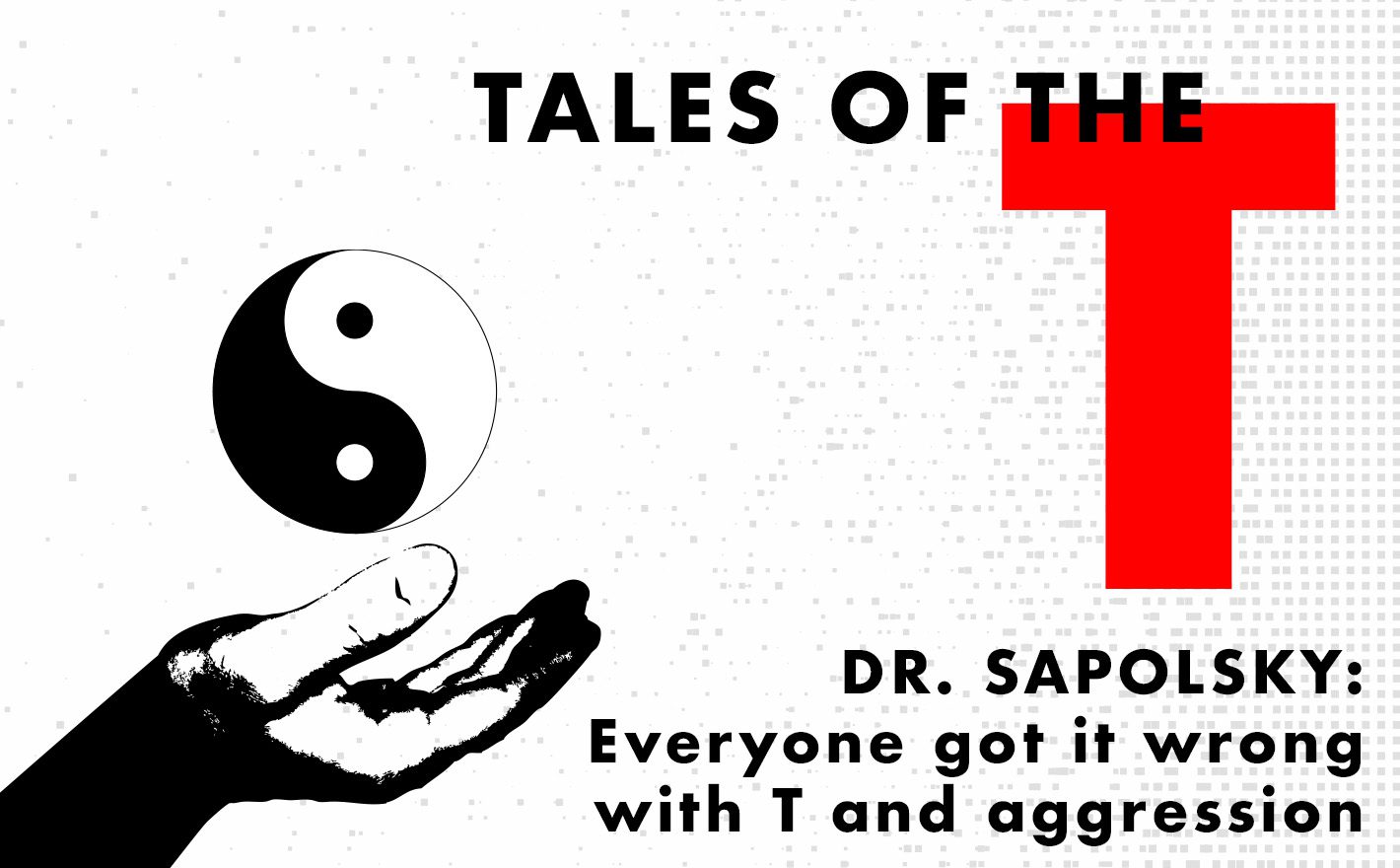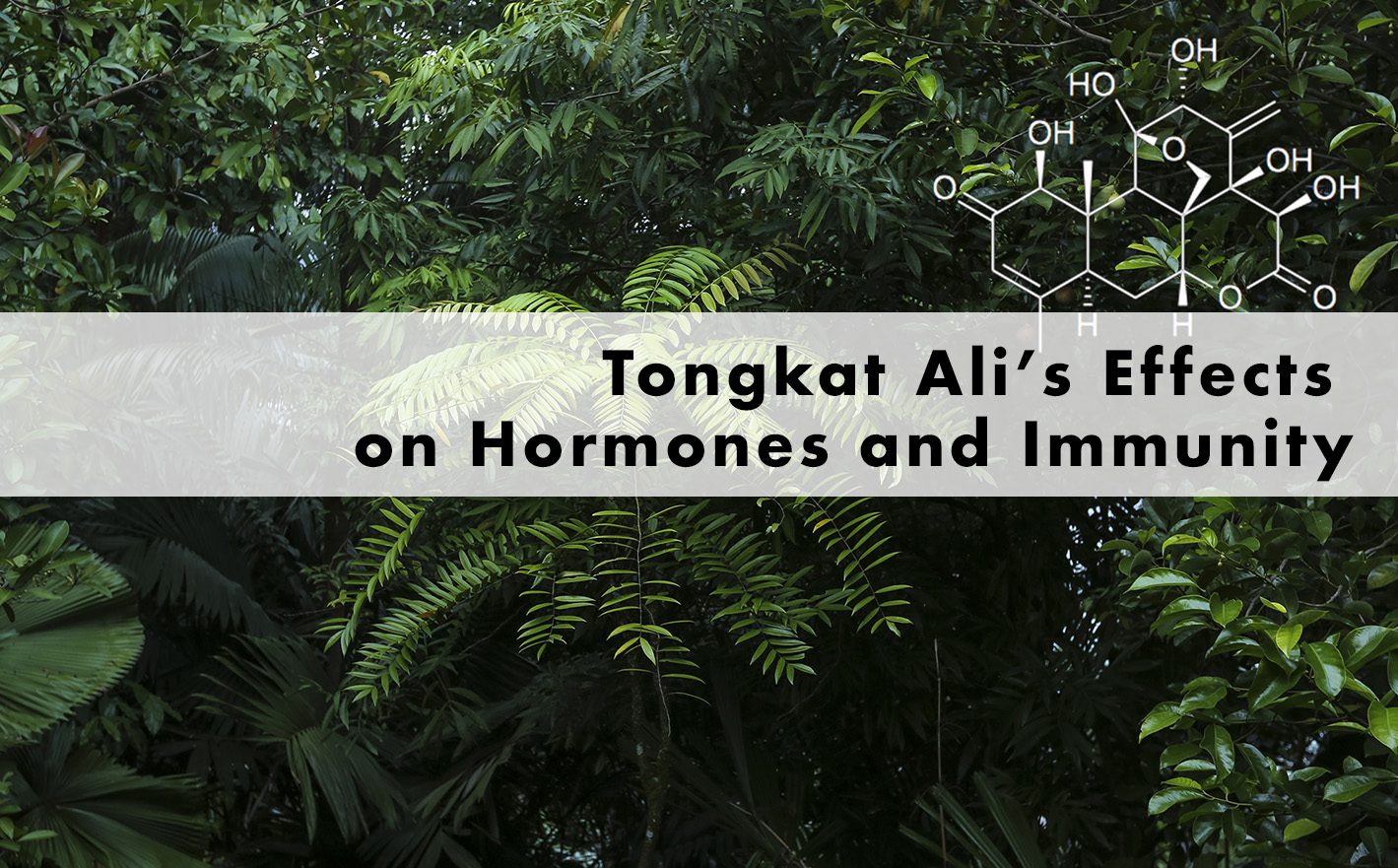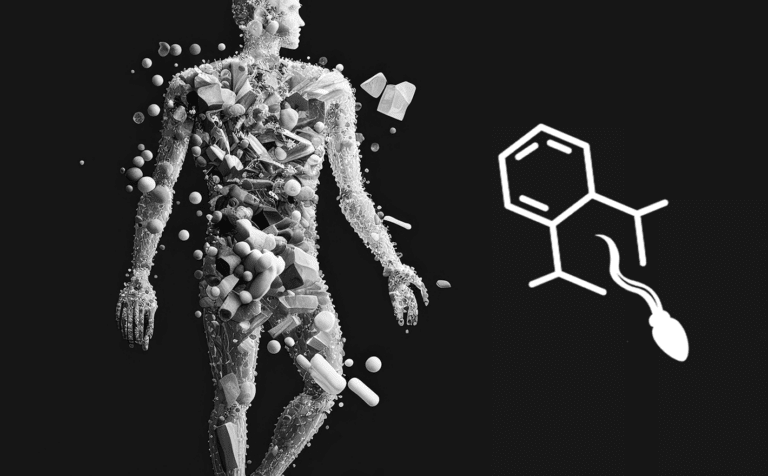Testosterone levels are plummeting, and human hormonal health is generally the most precarious it’s ever been.
While many mainstream health-related websites remain unwilling to speculate on the reasons why, there’s plenty of evidence to suggest that we know at least a few of the underlying factors.
Last week, I did a deep dive into the many faces of testosterone, and how difficult it is to stereotype its effects on the human body. I also talked about studies that are uncovering just how much of a problem declining T is for men.
Along with testosterone, male fertility is also declining at an alarming rate. Sperm counts are down and prescriptions for TRT (Testosterone Replacement Therapy) are way, way up.
Ultimately, this article isn’t just about T. It’s about hormonal health in general, and the health consequences of the chemical soup we live in. This affects women just as much as it does men.
So then, what are the driving factors behind the endocrine epidemic?
Casualties of Chemistry: DDT and the Organochloride Boom
The time: the late 1940s.
The place: the United States.
The sentiment: basking in the warm, fuzzy postwar glow and enjoying the spoils of our victory over Hitler and the Axis forces.
It was a time of celebration, excess, and unremitting hubris. We were riding high on a bloom of financial and technological breakthroughs.
Nothing could stop us, especially not insects.
During the war, DDT (also known as dichlorodiphenyltrichloroethane) was used extensively to control the mosquito populations and reduce illness in soldiers. Three years after the war ended, Swiss chemist Paul Hermann Müller was awarded the Nobel Prize in Physiology for his discovery ten years prior of the insecticidal qualities of DDT, particularly in the control of malaria and yellow fever.
Want to learn more about our top seller, CHOQ Purified Shilajit?
Check out our Shilajit Benefits page.
They told us DDT was so safe that you could eat it.
Here’s a quick video that shows children being sprayed with it while nonchalantly eating sandwiches, as well as a white scientist trying to convince members of a tribe in Kenya how safe it was by ingesting it in front of them:
The kids were on board, but the Kenyan locals were clearly too smart to buy it.
The prototypical organochlorine pesticide and endocrine disruptor, DDT was first synthesized in 1874,but got much more popular later after Müller’s award-winning research. Organochlorines are, as the name implies, based on chlorine. Like iodine, bromine, and fluorine, chlorine is a halogen.
Because of their similarities to iodine, which is critical for thyroid hormone production, certain compounds that contain halogen elements tend to disturb thyroid function, and DDT is no exception.
In addition to disrupting thyroid hormone production, DDT is also known to negatively affect the reproductive system.
DDT is able to bind to multiple types of estrogen receptors, including ER Alpha and ER Beta, and can alter the proliferation of uterine cells and the development of ovarian follicles (the structures in the ovaries that contain developing eggs and produce estrogen and progesterone). It’s also been linked to abnormal sperm production.
One study, which measured levels of DDT metabolites in the blood, found that the men with the highest levels were almost twice as likely to develop testicular germ tumors.
What’s particularly noteworthy is the gap between the time that DDT was banned—1972—and the time this study was performed, 2008.
DDT, like so many other man-made poisons, can remain a problem for decades after it stops being used.
If you’d like to dig deeper into the history of DDT and learn about the courageous scientist who exposed its dark side, check out Silent Spring by marine biologist and activist Rachel Carson.
The Demasculinizing Effects of Atrazine and the Revolutionary work of Tyrone Hayes
In 1998, Dr. Tyrone Hayes, a Harvard graduate with a PhD in Integrative Biology, was contracted by Syngenta to study the effects of their herbicide atrazine, a compound which is now the second most commonly used herbicide after glyphosate, despite the fact that it has been banned for nearly twenty years in Europe.
An expert in amphibian endocrinology, Dr. Hayes first found that the atrazine reduced the muscle tissue in male frogs’ vocal cords, which lead him to the hypothesis that it may reduce testosterone levels.
Upon further investigation, he found that the compound was able to—even at parts per billion—“chemically castrate” African clawed frogs, publishing his findings in PNAS (Proceedings of the National Academy of Sciences), one of the most prestigious of all scientific journals.
He later went on to determine that one of the ways that atrazine is able to disrupt testosterone is by inducing the enzyme aromatase, which converts testosterone to estrogen.
Dr. Hayes has criticized Syngenta for simultaneously manufacturing a pesticide that increases estrogen by amping up aromatase, as well as the drug letrozole, which acts in an opposite fashion by blocking aromatase and thus reducing estrogen.
The full story, including how Dr. Hayes was systemically followed, harassed, and even threatened with violence by Syngenta, can be found both in this New Yorker article as well as his (extremely entertaining) TEDx Talk below:
Glyphosate: the New DDT
A pesticide that needs no introduction, the ubiquitous glyphosate recently attracted attention due to Dewayne Johnson’s legal victory against Monsanto, with the court ordering the company to pay him $289 million for the role that the compound played in his illness.
Here are a few studies demonstrating glyphosate’s possible endocrine-disrupting abilities:
Are glyphosate and glyphosate-based herbicides endocrine disruptors that alter female fertility?
Glyphosate-based herbicide formulations and reproductive toxicity in animals
It’s unclear whether glyphosate acts directly on the endocrine system, or whether its hormone-disrupting effects are secondary to other effects. Research is ongoing and hopefully we’ll know more in the future about the mechanisms at play.
Glyphosate was first patented as an antibiotic, and thus massively disrupts the microbiome. Increasingly, scientists are uncovering links between the microbiome and estrogen metabolism.
One such link between the microbiome and estrogen is the process of glucuronidation, which is an important detoxification process that occurs largely in the liver, but also in the intestines.
History repeating itself is at once hilarious and tragic.
Here’s a video of a pro-Monsanto scientist claiming in an interview that you can drink a whole quart of glyphosate without being harmed, then refusing to even take a small sip when the interviewer confronts him with the opportunity:
Alphabet Soup, Ad Nauseam
BPA, BPE, PFOA, PFOS, BFR, PCB, TBBPA, PFBA…
So many letters. So little time.
An entire series of blogs could be written just on the endocrine-disrupting qualities of plastics and other common chemicals such as fire retardants, fragrances, solvents, lubricants, non-stick coatings, insulators, surfactants, and coolants, so I’ll need to be brief because I have no intention of making you glaze over with a slew of long chemical names and detailed descriptions of what each one does in the body.
Most people are familiar with the toxic nature of BPA, with its ability to lower testosterone by mimicking estrogen in the body.
Plastic, which is largely petroleum-based, is big business, and industry-funded websites like factsaboutbpa.org love to trot our their bought-and-paid-for PhDs to write articles like “BPA Is An Endocrine Disruptor? Science says NOT!”
Very cute.
I appreciate the fact that they went with a .org designation, despite the fact that they’re very much a commercial website owned by a conglomerate of multi-billion dollar companies. Nice touch. Well played!
Despite what their boilerplate shill articles might try to convince you of, BPA is very much an endocrine disruptor.
The Endocrine Society, an international organization comprised of thousands of scientists and physicians who are experts in the study of hormones, has this to say:
“BPA and other endocrine-disrupting chemicals (EDCs) harm human health by mimicking, blocking or otherwise interfering with the body’s hormones. BPA mimics the hormone estrogen. Because tiny amounts of estrogen trigger the development of numerous tissues in unborn children, exposure to low doses of BPA during critical windows of development can have lifelong impacts on health. As of 2014, nearly 100 epidemiological studies have been published tying BPA to health problems, according to the Introductory Guide to Endocrine-disrupting Chemicals published by the Society…”
You can read their guide here. In it, they even reference Carson’s book “Silent Spring” and explain how DDT set a precedent as the prototypical endocrine disruptor, echoing the beginning of this article.
Now for Solutions
Whether you’re in the camp who believes that we’re deliberately under attack, or whether these endocrine-disrupting effects are merely the accidental result of playing with chemical engineering, I’m with you.
I prefer not to speculate, but when the same company creates compounds that have the ability to create and to treat the same disease, you do have to wonder. From a purely Machiavellian approach, it’s an excellent business strategy, is it not?
At the end of the day though, it’s not about creating fear and loathing. It’s about giving you actionable data that helps you thrive.
In that spirit, here’s a list of recommendations for how to deal with the chemical onslaught and protect your endocrine system:
- Eat organic, or if you can’t afford to eat everything organic, use EWG’s “Clean 15, Dirty Dozen” list to help you avoid the most polluted produce.
- Use apps like Healthy Living and Think Dirty to analyze the toxicity of the products you buy (Think Dirty is a bit more functional and has quite a few more items in its database).
- Support natural detoxification with proper nutrition, which means plenty of clean water, fruits, and vegetables
- Take detox supplements like NAC, vitamin C, magnesium, milk thistle, selenium, folate, B12, MSM, and glutathione (avoid L-glutathione as it is far less effective than the s-acetyl or liposomal varieties)
- Use supplements that support endocrine and reproductive health, like tongkat ali, shilajit, grapeseed extract, zinc, nettle, schisandra, ashwagandha, gynostemma, and ginseng
- Buy a decent water filter. Your standard Brita pitcher is more limited than you might think. If you want to rid your water of pesticides and other endocrine disruptors, you want something with a carbon filter, such as a Berkey (and ideally, get the optional fluoride filters too).
Lastly, my final (and admittedly most controversial) suggestion is: eat more carbs.
Does that make me sound crazy? It shouldn’t, not when you begin to appreciate the connection between glucose and adrenal health.
I’m not talking about junk carbs, of course, but the sort that come directly from nature—fruit and starchy vegetables being the healthiest among them.
Our endocrine systems are intimately tied into glucose homeostasis and thus carb intake.
Our adrenal glands secrete multiple kinds of steroid hormones, including androgens like testosterone and glucocorticoids such as cortisol, cortisone, and corticosterone (notice that the name ‘glucocorticoid’ implies that these hormones affect glucose regulation).
Despite what you may have heard, a low carb, high fat, high protein diet is the perfect way to wreck your hormones.
It’s telling that the same gland can regulate sex hormone production and blood sugar. Knowing this little bit of physiology, then, it should be slightly less of a shock that studies like this one and this one have shown that athletes on a moderate carb diet have higher testosterone and lower cortisol ratios than those on a low carb diet (60% versus 30% carbs).
GnRH (gonadotropin-releasing hormone) is a hormone secreted by the hypothalamus that controls the production of sex hormones through its effects on the pituitary gland.
It’s well-established in the scientific literature that GnRH is glucose-dependent, which helps to explain why carnivore diet advocate Dr. Shawn Baker’s labs showed dismally low testosterone levels:
- Total Testosterone: 237 ng/dL (range is 264 – 916)
- Free Testosterone: 4.4 pg/mL (range is 7.2 – 24.0)
- In addition, his HbA1c was 6.3% (making him prediabetic)
Carbohydrates are critical for reproductive health. The low-carb craze is only adding more fuel to the fire of the endocrine epidemic.
The Big Picture
Researching this stuff can get dark, but I believe we–as informed, intelligent humans who pay attention and use our discernment–have permission to hope.
Sure, we’ve divorced ourselves from the natural world, much to the detriment of our sense of connection and purpose.
Sure, since the 1940s, tens of millions of unique chemical compounds have been synthesized or isolated by humans.
Sure, things look bleak when you look at the research, the players, and the numbers.
But humans are nothing if not adaptable.
We’ll have to endure some pretty massive changes and upheavals in the coming decades, but we’ll get through this and be all the better for it.
Carson was the consummate scientist and lover of nature. Unlike her contemporaries, she sought to appreciate rather than dominate and control Gaia.
I like to believe that she was someone who maintained her optimism, even after repeated deep dives into the tragic reality of what we’re doing to ourselves with all these poisons like DDT.
In that spirit, I’ll leave you with this quote from her book, “Silent Spring”:
“Those who contemplate the beauty of the earth find reserves of strength that will endure as long as life lasts. There is something infinitely healing in the repeated refrains of nature – the assurance that dawn comes after night, and spring after winter.”











